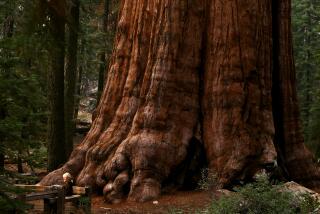Nutrient pollution threatens national park ecosystems, study says

National parks from the Sierra Nevada to the Great Smoky Mountains are increasingly being fertilized by unwanted nutrients drifting through the air from agricultural operations, putting some of the country’s most treasured natural landscapes at risk of ecological damage, a new study has found.
Thirty-eight of 45 national parks examined by scientists are receiving doses of nitrogen at or above a critical threshold that can harm sensitive ecosystems, such as lichens, hardwood forests or tallgrass prairie, scientists found.
“Changes to lichen communities may signal the beginning of other ecosystem changes that can eventually alter the function and structure of the community as a whole,” the study says.
Scientists looked at nitrogen oxides and ammonia that are released by vehicles, power plants and farms and carried on air currents into national parks, including those in some of the most remote areas of the West.
Nitrogen deposition is worst in parks close to concentrated industry, agriculture or cars, the study found. Researchers pointed to Great Smoky Mountains National Park, Cuyahoga Valley National Park and Sequoia National Park as among the most threatened.
Although plants need nitrogen to grow, too much of it is harmful because it can disrupt the cycling of nutrients in the soil, lower the pH of water, promote algae blooms and give a competitive advantage to nutrient-loving exotic species.
Air pollution regulations have been steadily reducing nitrogen oxides from fuel combustion, the study said. But emissions of ammonia, another nitrogen-based gas that comes from fertilizers and livestock, are not going down.
“If anything, they’re going up,” said Daniel Jacob, a professor of atmospheric chemistry at Harvard University and an author of the study, published in the journal Atmospheric Chemistry and Physics.
While nitrogen oxide emissions from automobiles and power plants are on track to decline by as much as 75% by 2050, the study projected, ammonia from agriculture could rise by up to 50% as the U.S. population grows, requires more food and uses more fertilizer and livestock.
”Right now there is no effort to control ammonia emissions in this country, no regulations of any kind,” Jacob said. “If we’re going to protect our national parks from the harmful effects of nitrogen deposition we’re going to have to do something about it.”
Twitter: @tonybarboza







